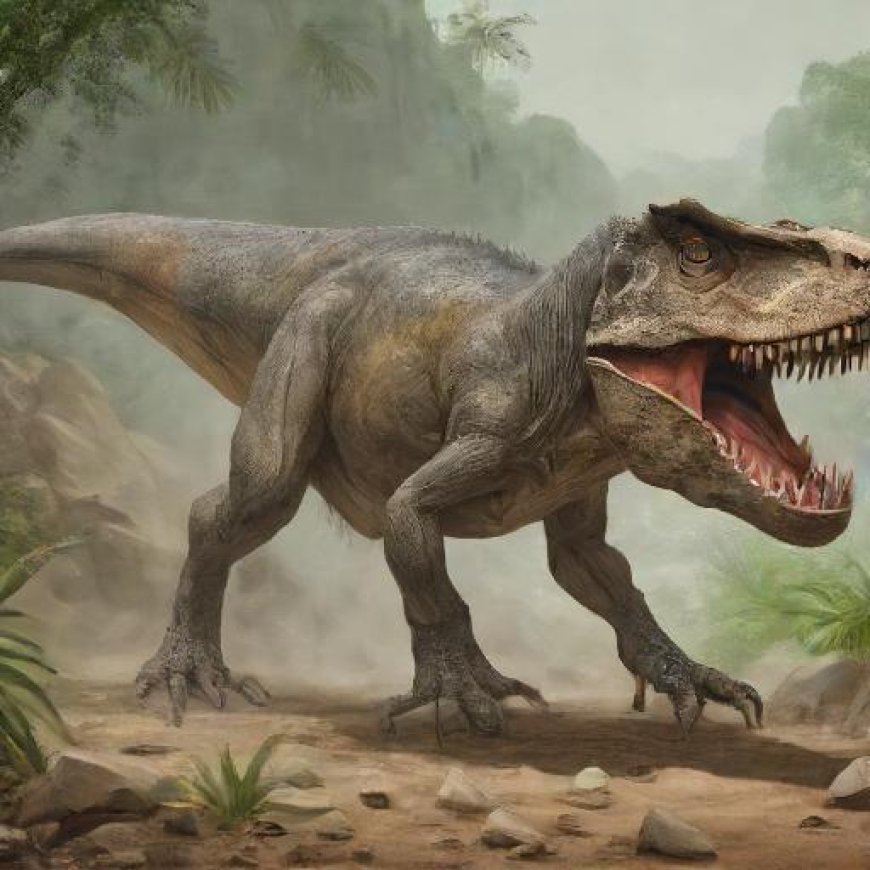First Deep-Snouted Tyrannosaur Discovered in Southeast China

n an exciting development in the field of paleontology, researchers have unearthed the remains of a previously unknown tyrannosaur species in Southeast China. This discovery, described as the first "deep-snouted" tyrannosaur, provides invaluable insights into the diversity and evolution of the Tyrannosauridae family, which includes some of the most iconic dinosaurs like Tyrannosaurus rex.
The Discovery
The fossil remains were discovered in the Jiangxi Province of Southeast China, a region known for its rich fossil deposits. The excavation site, which dates back to the Late Cretaceous period approximately 72 to 66 million years ago, has previously yielded numerous dinosaur fossils, but none quite like this.
Unique Features
The new tyrannosaur, named Qianzhousaurus sinensis, stands out due to its distinct cranial morphology. Unlike other members of the Tyrannosauridae family, Qianzhousaurus possesses an elongated, deep snout that differentiates it from its relatives.
Key features include:
-
Deep Snout: The most striking characteristic of Qianzhousaurus is its deep snout, which is proportionally longer and deeper than other known tyrannosaurs. This suggests a specialized feeding strategy, possibly involving different prey or hunting methods.
-
Reduced Dentition: The teeth of Qianzhousaurus are fewer and less robust than those of its relatives, indicating potential differences in diet or ecological niche.
-
Smaller Size: Measuring approximately 6-7 meters in length, Qianzhousaurus was smaller than the infamous Tyrannosaurus rex, suggesting it may have occupied a different ecological role.
Implications for Tyrannosaur Evolution
The discovery of Qianzhousaurus sinensis provides new insights into the evolutionary history of tyrannosaurs. Traditionally, tyrannosaurs have been characterized by their massive skulls, powerful jaws, and robust builds. However, the unique features of Qianzhousaurus challenge this archetype, suggesting that the tyrannosaur lineage was more diverse than previously thought.
Evolutionary Divergence
The presence of a deep-snouted tyrannosaur in Southeast Asia suggests a possible evolutionary divergence within the tyrannosaur family. This divergence might have been driven by geographic isolation, leading to the development of distinct morphological traits adapted to specific environmental conditions.
Ecological Niches
Qianzhousaurus likely occupied a different ecological niche compared to its larger relatives like Tyrannosaurus rex. Its smaller size and unique skull structure suggest it may have preyed on different animals or utilized unique hunting strategies. This adaptability highlights the tyrannosaurs' capacity to exploit various ecological opportunities.
Paleontological Significance
The discovery of Qianzhousaurus sinensis underscores the importance of Southeast Asia as a key region for understanding dinosaur evolution. The region's diverse fossil record continues to provide critical data for reconstructing the history of dinosaur life on Earth.
Contributions to Fossil Records
This find adds a new dimension to our understanding of tyrannosaur diversity. It highlights the need for continued exploration and excavation in regions like Southeast Asia, which may hold the key to uncovering more unique dinosaur species that can further illuminate the complexities of dinosaur evolution.
Impacts on Future Research
The deep-snouted tyrannosaur's discovery opens up new avenues for research, prompting scientists to revisit existing tyrannosaur specimens and reevaluate their classification. This find may inspire further studies into the adaptive strategies and ecological roles of smaller, lesser-known tyrannosaur species.
Conclusion
The unearthing of Qianzhousaurus sinensis in Southeast China marks a significant milestone in paleontological research. As the first deep-snouted tyrannosaur, it challenges existing paradigms about the Tyrannosauridae family and offers fresh perspectives on the evolutionary pathways that led to the rise of these formidable predators.
This discovery not only enriches our understanding of dinosaur biodiversity but also underscores the vast, still-untapped potential of paleontological sites across the globe. As researchers continue to unearth new fossils, each find brings us closer to piecing together the intricate puzzle of Earth's prehistoric past.
What's Your Reaction?








